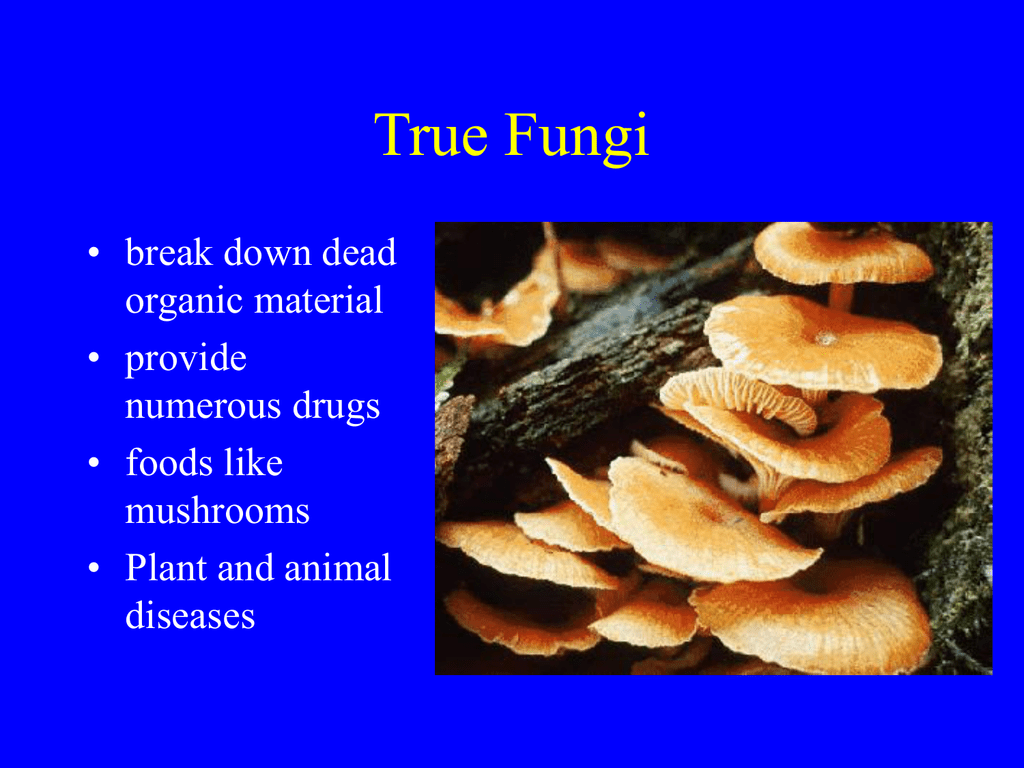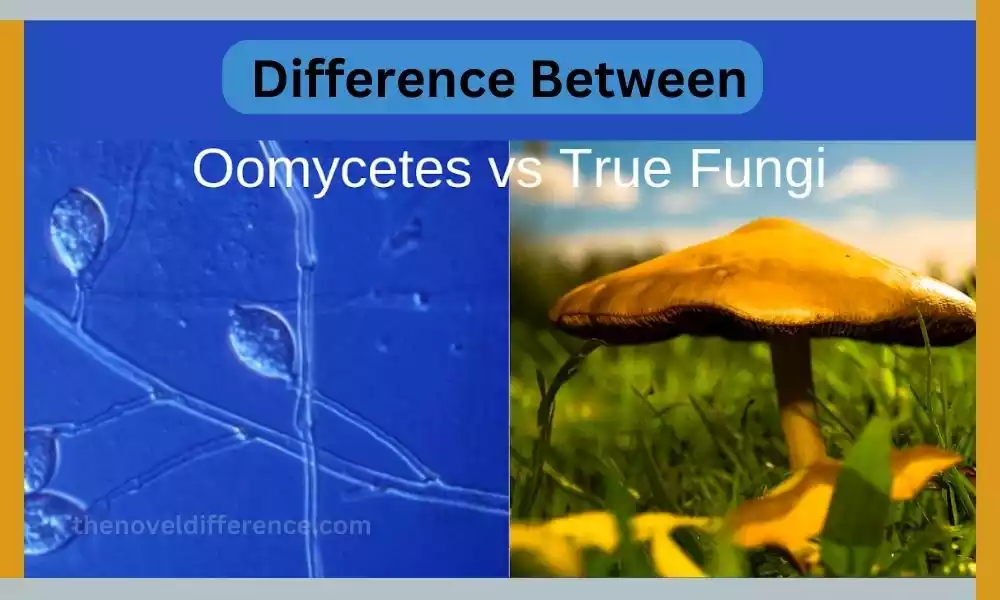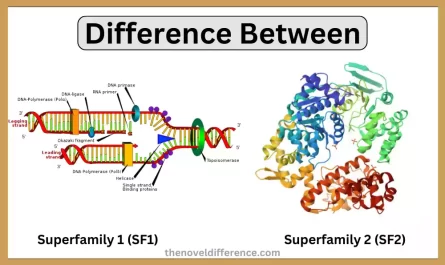When it comes to the world of organisms, numerous fascinating groups exhibit unique characteristics. Oomycetes and true fungi are two such groups that share some similarities but also possess distinct differences. We will delve into the world of Oomycetes and true fungi, exploring their characteristics, biology, and the key disparities that set them apart. So let’s dive in and unravel the mysteries surrounding these intriguing organisms.
Importance and diversity of both groups
Importance and Diversity of Oomycetes and True Fungi
A. Importance of Oomycetes:
1. Plant Pathogens: Oomycetes include some notorious plant pathogens, such as Phytophthora infestans, which cause late blight in potatoes and tomatoes. Their ability to cause devastating diseases in crops can have significant economic and agricultural impacts.
2. Aquatic Organisms: Oomycetes play important ecological roles in aquatic ecosystems as decomposers, parasites, and pathogens. They can affect fish, amphibians, and other aquatic organisms, impacting the overall health and balance of aquatic ecosystems.
3. Environmental Indicators: Some Oomycetes species, such as Saprolegnia, are used as indicators of environmental quality. Their presence or absence can provide insights into the health and condition of freshwater systems.
B. Diversity of Oomycetes:
1. Phylogenetic Diversity: Oomycetes are part of the kingdom Stramenopiles, which includes diverse organisms like diatoms and brown algae. This broad phylogenetic diversity highlights the evolutionary importance and uniqueness of Oomycetes within this kingdom.
2. Habitat Diversity: Oomycetes inhabit a wide range of environments, including freshwater, marine, and terrestrial habitats. This diversity allows them to occupy various ecological niches and interact with different organisms.
C. Importance of True Fungi:
1. Nutrient Cycling and Decomposition: True Fungi play a crucial role in decomposing organic matter and recycling nutrients in ecosystems. They break down complex natural compounds, such as lignin and cellulose, and discharge supplements back into the environment, making them accessible for other life forms.
2. Symbiotic Relationships: Many True Fungi form mutualistic associations with plants, known as mycorrhizae. These associations enhance nutrient uptake for plants and facilitate their growth and survival. Additionally, endophytic fungi can live within plant tissues without causing harm, providing benefits such as increased tolerance to environmental stressors.
3. Biotechnology and Industry: True Fungi have significant economic importance. They are utilized in different mechanical forms, such as the generation of nourishment and refreshments (e.g., bread, cheese, brew), anti-microbials (e.g., penicillin), and chemicals for mechanical applications (e.g., cellulases, amylases).
D. Diversity of True Fungi:
1. Taxonomic Diversity: True Fungi exhibit immense taxonomic diversity, with over 144,000 known species and likely many more yet to be discovered. They belong to the kingdom of Fungi and are divided into various phyla, including Ascomycota, Basidiomycota, and Zygomycota.
2. Ecological Diversity: True Fungi inhabit diverse ecosystems, including forests, grasslands, deserts, and aquatic environments. They can be found in soil, on plants, in symbiotic relationships, and as parasites or pathogens of various organisms. This ecological diversity reflects the adaptability and versatility of True Fungi in different environments.
Understanding the significance and differing qualities of both Oomycetes and True Fungi Organisms is vital for comprehending their environmental parts, their effect on different life forms, and their potential applications in areas such as farming, biotechnology, and natural administration.
Definition of Oomycetes and True Fungi
Oomycetes: Oomycetes, too known as water molds, are a gathering of living beings that were truly classified as parasites due to their comparable development propensities and environmental parts. Molecular studies have revealed that they belong to the kingdom Stramenopiles, which is distinct from true fungi. Oomycetes exhibit filamentous, thread-like structures called hyphae and reproduce through the formation of spores. They have a characteristic cell wall composition, consisting of cellulose and other compounds. Oomycetes are essentially sea-going or semi-aquatic living beings and are regularly found in freshwater territories, even though a few species can too occupy earthly situations. They include Oomycetes and True Fungi free-living species and parasitic forms that can cause diseases in plants, animals, and other organisms.
True Fungi: True Fungi, also known as Eumycota, are a diverse group of organisms belonging to the kingdom of Fungi. They are characterized by their unique cellular structure, which includes filamentous hyphae that form a network called mycelium. True fungi have chitin in their cell walls, a complex carbohydrate that provides rigidity and support. They reproduce by forming spores, either asexually or sexually, which can be dispersed through various means. True fungi exhibit a wide range of lifestyles and ecological roles.
They can be decomposers, breaking down dead organic matter, or they can form mutualistic relationships with other organisms, such as mycorrhizal associations with plants. Some true fungi are pathogenic and can cause diseases in plants, animals, and humans. The diversity of true fungi is vast, with thousands of known species occupying various habitats and ecological niches.
What is Oomycetes?
Oomycetes, moreover known as water molds, are a gathering of microorganisms that were verifiably classified as organisms due to their comparable development propensities and environmental parts. Molecular studies have revealed that they belong to the kingdom Stramenopiles, which is distinct from true fungi. Oomycetes exhibit characteristics of both fungi and protists.
Oomycetes are filamentous organisms that typically have a mycelial structure consisting of branching hyphae. These hyphae can penetrate and grow within host tissues, causing infections and diseases. Oomycetes reproduce through the formation of spores, which can be asexual or sexual. Asexual reproduction often involves the production of motile zoospores, which have flagella and can move through water environments. Sexual propagation in Oomycetes ordinarily includes the combination of male and female gametes, coming about within the arrangement of thick-walled oospores.
Oomycetes are primarily found in oceanic or semi-aquatic situations, such as lakes, waterways, and clammy soils. They can also be present in terrestrial habitats under certain conditions. Some Oomycetes are free-living and play important roles in decomposition and nutrient cycling. Many Oomycetes are parasitic and can cause diseases in plants, animals, and other organisms. Striking cases incorporate Phytophthora infestans, which causes late curses in potatoes and tomatoes, and Saprolegnia species, which can influence angle and other oceanic living beings.

Oomycetes are an assorted bunch of microorganisms that share a few similitudes with organisms but have a place in an isolated kingdom. Their ecological roles range from being decomposers to being pathogens, and their presence can have significant impacts on ecosystems and human activities.
Taxonomy and classification
Oomycetes belong to the kingdom Stramenopiles, which is one of the major eukaryotic lineages. Stramenopiles encompass a diverse range of organisms, including diatoms, brown algae, and certain unicellular organisms.
Within the kingdom of Stramenopiles, Oomycetes are classified under the class Oomycota or Oomycetes. This class further comprises several orders and families. Some of the commonly recognized orders of Oomycetes include Peronosporales, Pythiales, and Saprolegniales.
The order Peronosporales consists of Oomycetes which are primarily plant parasites, causing diseases like downy mildew in various crops. Phytophthora infestans, the causal agent of potato late blight, belongs to this order.
The order Pythiales comprises Oomycetes which are predominantly soil-borne pathogens. They can cause diseases in a wide range of plants, including crops and ornamentals. Pythium spp. are examples of Oomycetes belonging to this order.
The order Saprolegniales includes Oomycetes which are mostly aquatic or semi-aquatic organisms. They are often found in freshwater environments and can parasitize fish, amphibians, and other aquatic organisms. Saprolegnia spp. are prominent members of this order.
It is important to note that Oomycetes have a distinct evolutionary lineage from true fungi (Kingdom Fungi). While they share some similarities in their filamentous growth forms and ecological roles, Oomycetes and true fungi are classified in separate taxonomic groups due to their genetic and molecular differences.
Oomycetes are classified under the kingdom Stramenopiles and the class Oomycota. They are further categorized into different orders, such as Peronosporales, Pythiales, and Saprolegniales, based on their characteristics, ecological niches, and modes of parasitism or pathogenicity.
Taxonomy and classification
Reproduction and life cycle differ between Oomycetes and true fungi. Let’s explore them separately:
Reproduction and Life Cycle of Oomycetes: Oomycetes have a complex life cycle that involves both asexual and sexual reproduction.
Here are the general stages:
1. Asexual Reproduction:
• Asexual reproduction in Oomycetes typically involves the formation of motile spores called zoospores.
• Under favorable conditions, zoospores are released from specialized structures called sporangia, which are produced by the hyphae.
• Zoospores have one or two flagella, allowing them to swim in water environments.
• They can locate a suitable substrate, germinate, and develop into new hyphae, continuing the vegetative growth.
2. Sexual Reproduction:
• Sexual reproduction in Oomycetes occurs through the fusion of specialized reproductive structures.
• Under certain conditions, Oomycetes produce sexual structures, such as oogonia (female structures) and antheridia (male structures).
• An antheridium releases sperm cells that swim through water to reach an oogonium.
• The sperm fertilizes the oogonium, resulting in the formation of a thick-walled structure called an oospore.
• Oospores can be released from the oogonium and serve as a survival or dispersal stage.
The relative importance of asexual and sexual reproduction can vary among different Oomycetes species. Some species predominantly rely on asexual reproduction for rapid expansion, while others may have a balanced or more significant emphasis on sexual reproduction for genetic recombination.
Reproduction and Life Cycle of True Fungi: True fungi also have a diverse range of life cycles, but we’ll focus on the general aspects:
1. Asexual Reproduction:
• Asexual reproduction in true fungi typically involves the production of spores, which are dispersed to initiate new fungal growth.
• Spores can be formed in specialized structures called sporangia, conidia, or other types of spore-bearing structures.
• These spores are released into the environment and can be dispersed by various means, such as wind, water, or animals.
• When conditions are favorable, spores can germinate and develop into new hyphae, establishing a new fungal colony.
2. Sexual Reproduction:
• Sexual reproduction in true fungi involves the fusion of compatible hyphae or specialized reproductive structures.
• Fungi have various mechanisms for sexual reproduction, including plasmogamy (fusion of cytoplasm), karyogamy (fusion of nuclei), and meiosis.
• Plasmogamy results in the formation of a structure called a dikaryon, where two genetically distinct nuclei coexist within a single cell.
• Karyogamy occurs when the nuclei fuse, resulting in a diploid cell that undergoes meiosis to produce haploid spores.
• These haploid spores can be dispersed and germinate into new hyphae, continuing the life cycle.
The balance between asexual and sexual reproduction can vary among different true fungal species. Some fungi may primarily rely on asexual reproduction for rapid expansion, while others may have a greater emphasis on sexual reproduction to generate genetic diversity and adaptability.
Both Oomycetes and true fungi exhibit complex life cycles involving a combination of asexual and sexual reproduction. The specific details and variations depend on the species within each group.
What is True Fungi?
True fungi, also known as Eumycota, are a diverse group of organisms belonging to the kingdom of Fungi. They are characterized by unique characteristics and features that distinguish them from other organisms.
Here are some key aspects of true fungi:
1. Cell Structure: True fungi are eukaryotic organisms, meaning their cells have a nucleus and other membrane-bound organelles. They have a characteristic filamentous structure composed of branching thread-like structures called hyphae. These hyphae intertwine to form a network known as the mycelium.
2. Chitin Cell Wall: Fungal cells are surrounded by a cell wall made primarily of a complex carbohydrate called chitin. Chitin provides strength and rigidity to the cell wall and helps protect the fungal cells.
3. Nutritional Mode: True fungi are heterotrophic organisms, meaning they obtain nutrients from organic matter. They discharge chemicals that break down complex natural compounds, such as cellulose and lignin, into easier substances that can be retained and utilized by the organism.
4. Reproduction: True fungi reproduce through the production and dispersal of spores. These spores can be formed through both asexual and sexual reproduction. Asexual reproduction involves the production of genetically identical spores, while sexual reproduction involves the fusion of compatible hyphae or specialized reproductive structures, leading to the formation of genetically diverse spores.
5. Ecological Roles: True fungi have diverse ecological roles. They play a crucial role in ecosystems as decomposers, breaking down dead organic matter and recycling nutrients. Fungi also form mutualistic associations with other organisms, such as mycorrhizal associations with plants, where they aid in nutrient uptake. Additionally, some fungi can be pathogenic, causing diseases in plants, animals, and humans.
6. Taxonomic Diversity: True fungi exhibit a vast taxonomic diversity. They are classified into different phyla, including Ascomycota (sac fungi), Basidiomycota (club fungi), and Zygomycota (conjugated fungi), among others. Each phylum contains numerous species with unique characteristics, habitats, and ecological roles.

True fungi have significant economic importance and are utilized in various fields. They are included in nourishment generation (e.g., bread, cheese, brew), pharmaceuticals (e.g., anti-microbial), biotechnology (e.g., protein generation), and biological investigation. The study of true fungi, known as mycology, helps us understand their biological diversity, ecological significance, and potential applications in various industries.
Taxonomy and classification
True fungi, or Eumycota, are classified within the kingdom of Fungi. The kingdom of Fungi is one of the major groups of eukaryotic organisms, distinct from plants, animals, and protists. Within the kingdom of Fungi, true fungi are further categorized into various taxonomic ranks, including phyla, classes, orders, families, genera, and species.
Here is a general overview of the taxonomy and classification of true fungi:
1. Phyla: True fungi are classified into several phyla based on their characteristics, life cycles, and genetic relationships.
Some of the major phyla of true fungi include:
a. Ascomycota (sac fungi): This is the largest phylum of fungi, characterized by the production of spores within sac-like structures called asci. It includes diverse groups of fungi, such as yeasts, molds, and truffles.
b. Basidiomycota (club fungi): This phylum includes fungi that produce spores on specialized structures called basidia. Many familiar fungi, including mushrooms, toadstools, and puffballs, belong to this phylum.
c. Zygomycota (conjugated fungi): Zygomycota comprises fungi that reproduce sexually through the formation of durable resting structures called zygospores. Bread molds and some plant pathogens are examples of Zygomycota.
d. Glomeromycota: This phylum includes fungi that form arbuscular mycorrhizal associations with plant roots. These fungi play a crucial role in nutrient exchange between plants and soil.
e. Chytridiomycota: Chytridiomycota is aquatic fungi with flagellated spores. Some species within this phylum are known to cause diseases in amphibians.
2. Classes, Orders, Families, Genera, and Species: Within each phylum, true fungi are further classified into various classes, orders, families, genera, and species. These taxonomic ranks help in organizing and classifying the diversity of true fungi based on their shared characteristics and evolutionary relationships.
It is vital to note that the classification of genuine organisms is ceaselessly advancing as unused species are found, and propels in hereditary considerations give experiences into their connections and developmental history.
Scientific categorization and classification are carried out by mycologists, researchers specializing in the think-about of organisms, who utilize morphological, hereditary, and environmental information to dole out parasites to their particular taxa.
The taxonomy and classification of true fungi involve organizing them into different phyla, classes, orders, families, genera, and species based on their unique characteristics, reproductive structures, and genetic relationships.
Reproduction and life cycle
The reproduction and life cycle of true fungi can vary depending on the specific fungal species. There are common aspects that characterize the reproduction and life cycle of many true fungi.
Here is a general overview:
1. Asexual Reproduction:
• Asexual reproduction in true fungi involves the production and dispersal of spores.
• Spores are typically formed in specialized structures called sporangia or conidiophores.
• These spores are often produced through mitosis, resulting in genetically identical offspring.
• Spores are released into the environment and can be dispersed by wind, water, animals, or other means.
• When conditions are suitable, spores germinate, and hyphae grow, giving rise to new fungal colonies.
2. Sexual Reproduction:
• Sexual reproduction in true fungi involves the fusion of compatible hyphae or specialized structures.
• Fungi have various mechanisms for sexual reproduction, including plasmogamy, karyogamy, and meiosis.
• Plasmogamy is the fusion of cytoplasm from two compatible mating types, resulting in a heterokaryotic cell.
• Karyogamy occurs when the nuclei of the fused hyphae or cells fuse, resulting in a diploid cell.
• The diploid cell undergoes meiosis, a process that reduces the chromosome number, leading to the formation of haploid spores.
• These haploid spores are genetically diverse and can be dispersed to initiate new fungal growth.
3. Life Cycle:
• The life cycle of true fungi typically involves alternating haploid and diploid stages.
• The haploid stage predominates in the life cycle, with the majority of the fungal body existing as haploid hyphae.
• During sexual reproduction, the fusion of nuclei and subsequent meiosis occur in the diploid stage.
• The haploid spores produced through meiosis give rise to new haploid hyphae, continuing the life cycle.
It’s important to note that the specifics of the reproductive process and life cycle can vary among different groups and species of true fungi. Some fungi may have more complex life cycles, while others may predominantly rely on either asexual or sexual reproduction. Certain fungi can undergo specialized modes of reproduction, such as the formation of specialized structures like fruiting bodies or the production of specialized spore types.
Understanding the reproductive strategies and life cycles of true fungi is crucial for comprehending their ecological roles, population dynamics, and genetic diversity. The variety in regenerative techniques among organisms contributes to their victory in colonizing differing territories and their capacity to adjust to changing natural conditions.
Differences between Oomycetes and True Fungi
Oomycetes and true fungi share some similarities in their filamentous growth forms and ecological roles, but there are significant differences between the two groups.
Here are some key distinctions:
1. Taxonomy and Classification:
• Oomycetes belong to the kingdom Stramenopiles, while true fungi belong to the kingdom Fungi. They are classified into separate taxonomic groups based on genetic and molecular differences.
2. Cell Wall Composition:
• Oomycetes have cell walls composed of cellulose and beta-glucans, similar to the cell walls of plants. In contrast, true fungi have cell walls primarily composed of chitin, a complex carbohydrate.
3. Nutritional Mode:
• Oomycetes are predominantly absorptive heterotrophs, obtaining nutrients by secreting enzymes and absorbing organic matter. They can be saprophytic (obtaining nutrients from dead organic material) or parasitic (obtaining nutrients from living hosts).
• True fungi are also absorptive heterotrophs but primarily obtain nutrients through the extracellular digestion of organic matter. They are major decomposers, breaking down complex organic compounds and recycling nutrients in ecosystems.
4. Reproductive Structures:
• Oomycetes produce motile spores called zoospores, which have flagella and can move through water environments. These zoospores are involved in asexual reproduction.
• True fungi produce non-motile spores, such as conidia or basidiospores, which are typically dispersed by wind, water, or other means. Asexual and sexual reproduction is common in true fungi, involving the production and dispersal of spores.
5. Sexual Reproduction:
• Oomycetes have sexual reproduction involving the fusion of male and female gametes, resulting in the formation of thick-walled oospores.
• True fungi have sexual reproduction involving the fusion of compatible hyphae or specialized structures. Plasmogamy, karyogamy, and meiosis occur in the life cycle, leading to the formation of genetically diverse spores.
6. Ecological Roles:
• Oomycetes include many destructive plant pathogens, causing diseases such as late blight and downy mildew. They can also affect aquatic organisms, causing diseases in fish and amphibians.
• True fungi have diverse ecological roles, including decomposition, nutrient cycling, mycorrhizal associations with plants, and symbiotic relationships with other organisms.
7. Genetic and Molecular Differences:
• Oomycetes have genetic and molecular characteristics more closely related to algae and diatoms than true fungi. They exhibit differences in genes, metabolic pathways, and cell division processes.
Understanding the differences between Oomycetes and true fungi is important for accurate classification, ecological studies, and disease management strategies. These distinctions highlight the unique characteristics and evolutionary paths of each group within the broader context of microbial diversity.
Conclusion
Oomycetes and true fungi represent two distinct groups of organisms with both similarities and differences. While Oomycetes and True Fungi possess filamentous structures and play ecological roles, their cell wall composition, mode of nutrition, reproductive structures, and ecological impact set them apart. Understanding these differences helps us appreciate the complexity and diversity of the fungal kingdom. So the next time you encounter water molds or fungi, you’ll have a deeper understanding of their unique characteristics.




